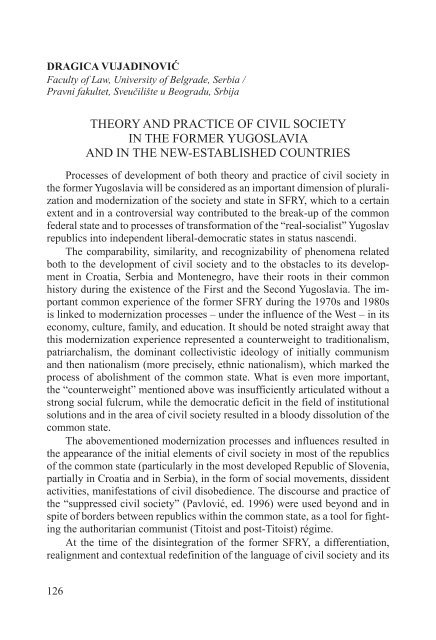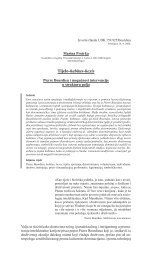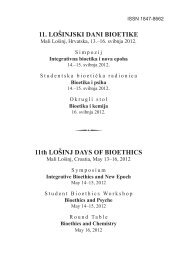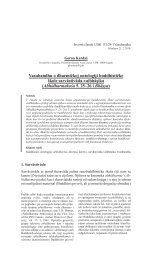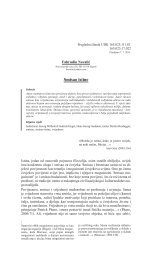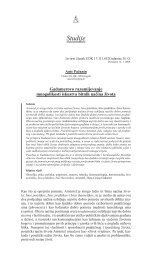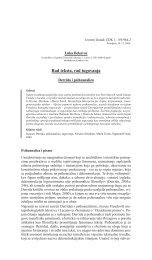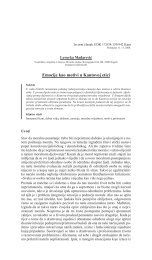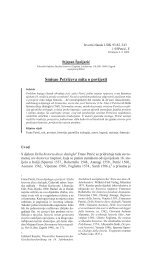Programska knjižica - Hrvatsko filozofsko društvo
Programska knjižica - Hrvatsko filozofsko društvo
Programska knjižica - Hrvatsko filozofsko društvo
Create successful ePaper yourself
Turn your PDF publications into a flip-book with our unique Google optimized e-Paper software.
DRAGICA VUJADINOVIĆ<br />
Faculty of Law, University of Belgrade, Serbia /<br />
Pravni fakultet, Sveučilište u Beogradu, Srbija<br />
THEORY AND PRACTICE OF CIVIL SOCIETY<br />
IN THE FORMER YUGOSLAVIA<br />
AND IN THE NEW-ESTABLISHED COUNTRIES<br />
Processes of development of both theory and practice of civil society in<br />
the former Yugoslavia will be considered as an important dimension of pluralization<br />
and modernization of the society and state in SFRY, which to a certain<br />
extent and in a controversial way contributed to the break-up of the common<br />
federal state and to processes of transformation of the “real-socialist” Yugoslav<br />
republics into independent liberal-democratic states in status nascendi.<br />
The comparability, similarity, and recognizability of phenomena related<br />
both to the development of civil society and to the obstacles to its development<br />
in Croatia, Serbia and Montenegro, have their roots in their common<br />
history during the existence of the First and the Second Yugoslavia. The important<br />
common experience of the former SFRY during the 1970s and 1980s<br />
is linked to modernization processes – under the influence of the West – in its<br />
economy, culture, family, and education. It should be noted straight away that<br />
this modernization experience represented a counterweight to traditionalism,<br />
patriarchalism, the dominant collectivistic ideology of initially communism<br />
and then nationalism (more precisely, ethnic nationalism), which marked the<br />
process of abolishment of the common state. What is even more important,<br />
the “counterweight” mentioned above was insufficiently articulated without a<br />
strong social fulcrum, while the democratic deficit in the field of institutional<br />
solutions and in the area of civil society resulted in a bloody dissolution of the<br />
common state.<br />
The abovementioned modernization processes and influences resulted in<br />
the appearance of the initial elements of civil society in most of the republics<br />
of the common state (particularly in the most developed Republic of Slovenia,<br />
partially in Croatia and in Serbia), in the form of social movements, dissident<br />
activities, manifestations of civil disobedience. The discourse and practice of<br />
the “suppressed civil society” (Pavlović, ed. 1996) were used beyond and in<br />
spite of borders between republics within the common state, as a tool for fighting<br />
the authoritarian communist (Titoist and post-Titoist) régime.<br />
At the time of the disintegration of the former SFRY, a differentiation,<br />
realignment and contextual redefinition of the language of civil society and its<br />
126


